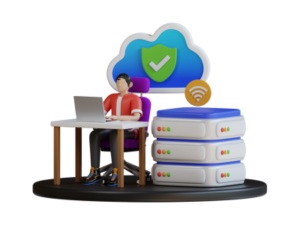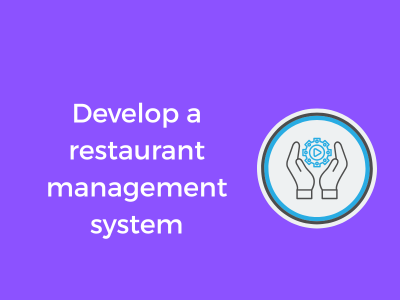Hello, fellow restaurateur! Whether you’re running a cozy café, a bustling fast-food chain, or an upscale dining experience, there’s one thing we can all agree on – restaurants don’t succeed by accident. Each operation has specific needs that must be understood and met if you’re aiming to thrive in today’s fast-paced world. Let’s unpack what those needs are and how they fuel the foundation of your management system.
Defining the Basics: Why Start with Core Needs?
Before building any restaurant management system, it’s important to start by identifying what truly matters for your operation. Think of it like creating a recipe – a solid base will ensure the whole dish works well. For restaurants, this means focusing on aspects like:
- Seamless coordination: Your team, from chefs to servers, needs streamlined communication tools to handle orders efficiently.
- Accurate inventory management: Missed stock counts or wasted ingredients can hurt your wallet and reputation.
- Consistent customer experience: Whether in-person or online, diners expect excellence in service, speed, and quality.
- Growth readiness: As you scale, you’ll need systems that can grow with you without causing chaos.
What Are the Core Challenges Modern Restaurants Face?
Running a restaurant has always been a challenge, but let’s not sugarcoat it – today’s world brings extra complexity. Restaurants are juggling the demands of tech-savvy diners, increased competition, and everything from supply chain disruptions to labor shortages. Here’s a closer look at some challenges you might face:
- The digital demand: Diners now expect online reservations, mobile payments, delivery tracking, and loyalty rewards. It’s not optional; it’s mandatory.
- Rising operational costs: Managing profits while juggling food prices and labor costs isn’t just tricky – it’s an art form.
- Staffing struggles: High turnover rates and training gaps can cripple your ability to deliver consistent service.
- Fragmented systems: Using different tools for orders, finances, and stock? That’s a recipe for inefficiency.
So, How Do You Identify Your Restaurant’s Core Needs?
Every restaurant is unique, but there’s a quick exercise you can do to uncover your priorities. Ask yourself these simple yet powerful questions:
- Which operational tasks take the most time and energy?
- Where do issues frequently arise (e.g., kitchen delays, wrong orders, unhappy customers)?
- What do my customers wish I did better?
- How future-proof is my current system for tracking inventory, bookings, and payments?
These questions can help you peel back the layers on your restaurant’s operations and pinpoint areas that need improvement. For example, if order accuracy is a lingering concern, part of your management solution might include a reliable point-of-sale (POS) system. Or, if you’re struggling with food waste, a smarter inventory tool might be the answer.
App Development For Startups: How to Turn Your Idea Into a Scalable Product: Read More.
Essential Features That Drive Efficient Management
Running a restaurant isn’t just about serving delicious food; it’s about keeping all the moving parts working in harmony so your operations can run like clockwork. To achieve that, you’ll need a restaurant management system (RMS) equipped with essential features that truly make a difference. Let’s dive into the tools and capabilities that can transform your restaurant into a well-oiled machine.
1. User-Friendly Interface for Staff and Management
The foundation of any great restaurant management system is its ease of use. Whether you’re training new servers, onboarding kitchen staff, or working with seasoned managers, the system needs an intuitive interface. A clutter-free, clear dashboard helps minimize mistakes and saves crucial time during busy hours.
When exploring RMS options, focus on systems that let employees learn quickly and managers make adjustments without constant troubleshooting. Tech should empower, not frustrate, your team!
2. Robust Staff Scheduling and Management
Let’s face it—managing employee schedules can sometimes feel like solving a jigsaw puzzle. A great RMS streamlines this process through features such as:
- Real-time schedule adjustments
- Shift conflict warnings
- Payroll integration
- Time tracking and attendance monitoring
Did you know systems with built-in communication tools also reduce the back-and-forth between team members? That way, your staff spends less time coordinating and more time focusing on your customers.
3. Inventory Management Integration
Running out of a key dish ingredient during dinner rush is a restaurant owner’s nightmare. An RMS that integrates inventory management ensures you know exactly what’s in stock at all times. Look for these features:
- Automatic updates when an item is used
- Low-stock alerts and reordering capabilities
- Ingredient tracking for menu transparency
This integration lets you avoid surprise shortages and overstocking, optimizing both your kitchen and your budget.
4. Table Reservation and Management
Busy nights can turn chaotic quickly without a reliable reservation system. Ensure that your restaurant management system includes:
- Real-time table availability tracking
- Waitlist management
- Online booking capabilities
- Seating optimization tools
A seamless reservation system not only improves customer satisfaction but also maximizes your seating potential—delivering a double win.
5. Backend Administrative Support
From tax records to sales reporting, behind-the-scenes support matters just as much as front-of-house efficiency. A stellar RMS should offer administrative features like:
- Tax compliance tools
- Data backups to secure important information
- Easily accessible reports for profit tracking
This ensures that whether it’s tax season or planning your next business strategy, you’ve got all the info you need at your fingertips.
6. Flexible Customization Options
Every restaurant is unique, and your RMS should reflect that. Whether it’s configuring specific roles for various team members or tailoring menu options for specific dining experiences, flexibility is key. Prioritize solutions that grow with your business!
Integrating Seamless Ordering and Payment Processes
Picture this: a bustling restaurant filled with happy customers enjoying their meals, while staff gracefully assist and orders flow effortlessly. Sounds like a dream, right? Well, achieving this is not as far-fetched as it seems. One of the key ingredients to this picture-perfect dining experience is seamlessly integrating your ordering and payment processes. Let’s dive right in!

The Art of Simplifying Ordering
Ordering is a cornerstone of any restaurant’s operation. It’s the first point of interaction guests have with your service, and getting it right is crucial. Here’s how to make it click:
- Digital Menus: Gone are the days of static paper menus. Updating prices, photographs, or descriptions can now be as easy as a few clicks. Digital menus are also easily adaptable to highlight specials or new dishes.
- Mobile Ordering: Give diners the freedom to view your menu and place orders directly from the comfort of their table or while waiting for a seat. This reduces wait times and adds a sense of control to their dining experience.
- Table-Side Devices: Equip your servers with tablets or hand-held devices. They can take orders and send them straight to the kitchen in real time. This minimizes errors and ensures a smoother operation from order-to-kitchen.
Frictionless Payment: The Ultimate Dining Finish
The end of the dining experience can significantly impact how your customers perceive their overall visit. Complicated or extended payment processes? Not so great. An easy, hassle-free payment experience? Unforgettable. Here’s how to achieve it:
- Multiple Payment Options: From credit cards and debit cards to mobile wallets like Google Pay and Apple Pay, customers love having options. Don’t restrict them to carrying cash or only one payment method.
- Contactless Payments: Especially post-pandemic, people love the ease and hygiene of tapping their card or phone for swift payments. Consider adopting NFC (Near-Field Communication) technology.
- Split Bill Options: Group dining is common at restaurants, and splitting the bill equitably shouldn’t be a headache for either the customers or the staff. Ensure your system can easily accommodate split bills for convenience.
Connecting Ordering and Payment
To make both the ordering and payment processes universally delightful, it’s essential that they interact smoothly. This can be achieved with:
- Point of Sale (POS) System Integration: A modern POS system acts as the brain behind operations. It ties together orders, inventory, and payments into one streamlined workflow. Look for systems that offer synchronized ordering and payment capabilities.
- Real-Time Updates: As soon as an order is placed, payment statuses should be updated in real-time. This minimizes errors, duplications, and discrepancies.
- Receipts Made Easy: Provide customers with an option for paper or digital receipts (via email or SMS). Not only is it environmentally friendly, but it’s also increasingly preferred by tech-savvy customers.
Bridging the Gap Between Inventory and Kitchen Operations
Running a restaurant can feel like a juggling act, and one of the trickiest parts is making sure your inventory and kitchen operations are working harmoniously. After all, your team relies on the right ingredients being available at the right time to whip up your signature dishes. Let’s dive into how to bridge this gap and make your restaurant operations smoother than ever.
1. Why Is This Connection So Important?
Picture this: a customer orders your best-selling pasta, but in the middle of preparing it, your chef realizes there’s no basil left. Suddenly, your kitchen is scrambling, customers are left waiting, and your staff feels the pressure — all because your inventory system and kitchen aren’t in sync. Bridging this gap isn’t just about logistics; it’s about ensuring customer satisfaction and reducing stress on your team.
2. Centralized Inventory Management
A centralized inventory management system acts like a conductor, ensuring everything flows seamlessly between inventory and the kitchen. Here’s why you need it:
- Live Inventory Tracking: Your system can automatically update ingredient levels as dishes are prepared, so you always know what’s on hand in real time.
- Forecasting Needs: Analyze past sales data and trends to predict demand, making it easier to stock ingredients without over- or under-ordering.
- Reduced Waste: With better visibility, you can minimize food spoilage and reduce costs.
This isn’t just a convenience; it’s a must-have for efficient operations in today’s fast-paced industry.
3. Integrating Kitchen Display Systems (KDS)
Say goodbye to paper orders and verbal miscommunication! A Kitchen Display System (KDS) integrates with your inventory and ordering system to create a streamlined process. When an order comes in, your KDS can:
- Check the availability of ingredients in real time.
- Alert staff if an ingredient is low or out of stock.
- Help your kitchen prioritize and organize orders for maximum efficiency.
With tools like these, your kitchen moves like a well-oiled machine.
4. Automating Reorder Processes
Your inventory system can help take the guesswork out of reordering. By keeping track of stock levels and order trends, your system can automatically generate purchase orders when ingredients dip below a certain threshold. This automation keeps your shelves stocked and lets your team focus on where they shine — crafting delicious meals!
5. Communication is Key (And Tech Makes it Happen!)
Bridge the gap between inventory and your kitchen with smart technology that supports communication. For example:
- Mobile Alerts: Keep your team informed with instant notifications when stock levels are critical.
- Shared Access: Let managers, chefs, and inventory staff access the same system to stay on the same page.
- User-Friendly Dashboards: A clear, visual interface helps staff quickly understand what’s going on and what’s needed.
These tools give everyone in your restaurant the clarity to work confidently and efficiently.
6. Creating a Feedback Loop
Lastly, foster a feedback loop where your inventory and kitchen teams can share insights about stock usage, wastage, and demand. Use this information to fine-tune your systems and refine your ordering processes over time. A little communication can make a big difference.
Enhancing Customer Engagement Through Technology
Let’s talk about customer satisfaction and how technology is turning the dining experience into something extraordinary. In today’s fast-paced, digitally-driven world, diners expect more than just delicious food and excellent service—they yearn for a seamless and engaging experience. And guess what? Technology is your secret ingredient for making that happen!
Why Customer Engagement Matters
First things first: why should you care about customer engagement? Well, it’s simple. When customers feel valued and connected to your restaurant, they’re more likely to come back, tell their friends about you, and even leave glowing online reviews. Technology enables you to meet your guests where they already are—their smartphones and other devices—making those moments of interaction personal, effortless, and memorable.
Crafting Unique Experiences with Tech
So how can you use technology to truly engage with your diners? Let’s explore a few exciting ways.
- Table Reservation Systems: A sleek online table reservation platform takes the guesswork out of dining. Customers love the convenience of reserving their table with just a few clicks. Bonus points if you integrate SMS or email confirmations—efficient, personal, and oh-so-modern.
- Customized Loyalty Programs: Everyone loves rewards, right? Create a digital loyalty program that dishes out points for visits, birthdays, or specific orders. Apps or QR codes allow customers to quickly check their status, and you can offer perks like free desserts or discounts. Small gestures go a long way in making customers feel special.
- Interactive Menus: Forget static paper menus. Interactive digital menus not only look cool but also allow diners to explore ingredients, nutrition facts, or even pairing recommendations. If you’re feeling ambitious, add augmented reality to let customers see virtual renditions of their dish before it arrives!
Embrace Social Media as Your Ally
Social media is another excellent tool for engagement. Platforms like Instagram, Facebook, and TikTok are goldmines for building a connection with your diners.
- Share Behind-the-Scenes Content: Whether it’s your chef prepping dishes or the team brainstorming new ideas, give diners a peek behind the curtain. It humanizes your brand and adds authenticity.
- User-Generated Content: Encourage diners to tag your restaurant in their selfies or food photos. Run lighthearted contests like #DishOfTheDay to drive engagement and promote some friendly competition.
- Real-Time Interaction: Create polls, respond to customer comments, or host live Q&A sessions. The more interactive your page, the more likely diners will associate your restaurant with a sense of community.
Effortless Personalization
Personalization is the key to winning hearts. Use your restaurant management system to analyze customer data (like past orders or preferences) and craft tailored experiences. For example, send out personalized email offers stating, “We noticed you loved our tiramisu—here’s 20% off your next dessert!” Such targeted actions show customers that you see and appreciate them as individuals.
Exploring the Role of Reporting and Analytics in Decision-Making
Managing a restaurant is no easy feat. It’s not just about serving delicious food and creating a welcoming atmosphere—it’s about making smart decisions to keep the operation running efficiently and profitably. Enter the superheroes of the restaurant world: reporting and analytics. These tools hold the key to making data-driven decisions that can propel your business into success. Let’s dive into why they matter and how you can harness them to steer your restaurant in the right direction.
Why Reporting and Analytics Matter
Imagine trying to pilot a plane without a dashboard. Sounds terrifying, right? That’s what running a restaurant without analytics is like: you’re navigating without seeing the full picture. Analytics give you a complete view of your restaurant operations, shedding light on performance, trends, and opportunities for improvement. With clear, actionable insights, you can make informed choices rather than relying on guesswork.
Here’s why reporting tools are essential:
- Spotting Trends: Want to know which dishes your customers rave about or what time of day your restaurant gets most crowded? Analytics decode these patterns for you.
- Improving Efficiency: Detailed reports let you identify bottlenecks or areas where resources (like staffing or inventory) might not be optimally utilized.
- Boosting Profitability: Know precisely where your money’s going and which areas are most profitable—no more mystery around your finances!
- Staying Ahead: In a competitive market, insights keep you one step ahead of trends, helping you adapt and meet changing customer expectations.
Building Powerful, Actionable Insights
So, where do you start? When implementing reporting and analytics, break it into bite-sized steps to ensure your data translates into meaningful action:
- Choose a Robust System: Invest in a restaurant management software that comes equipped with versatile reporting capabilities. Features like real-time dashboards and customizable reports are invaluable.
- Track Key Metrics: Sure, analytics can give you a world of information, but don’t drown in data! Focus on essential metrics like sales per hour, customer retention rates, table turn times, and food cost percentages.
- Set Goals: Establish clear objectives, whether it’s reducing ingredient waste, increasing revenue during slower hours, or improving customer satisfaction scores.
- Make Data Usable: Reports are only helpful if interpreted correctly. Train your team to understand them so you can brainstorm actionable strategies together!
The Magic of Real-Time Reporting
In today’s fast-paced world, real-time reporting is a game-changer. Imagine knowing immediately when a menu item is underperforming or spotting a dip in sales before it becomes a trend. Data shouldn’t just live in yesterday—real-time insights help you stay nimble, adaptable, and proactive.
From Data to Delight
Beyond improving your restaurant’s operations, reporting and analytics can significantly enhance the dining experience you offer. For example, analytics can show you which menu items have seasonal popularity, allowing you to craft timely specials that customers love. It’s about turning raw data into opportunities to surprise and delight your guests.
Future-Proofing Your Restaurant with Scalable Systems
Ah, the future! It’s exciting, isn’t it? But for restaurant owners and managers, thinking about “what’s next” can also feel a bit overwhelming. The restaurant industry is evolving at a dizzying pace, and keeping up with innovations—let alone preparing for what’s around the corner—is no small feat. However, here’s the key: a scalable restaurant management system. It’s your golden ticket to meeting today’s needs while staying ready to tackle tomorrow’s challenges. Let’s dive in!

What Does “Scalability” Even Mean?
In plain terms, scalability is all about your system’s ability to grow or adapt as your restaurant’s needs change. Whether you’re running a cozy café today and dreaming of opening multiple franchises tomorrow, having scalable tools in place ensures that your operations can handle the transition smoothly.
Think of it like this: you wouldn’t buy a car that fits two people if you plan on taking cross-country trips with a group of five. Similarly, your restaurant management system should be robust enough to accommodate new tables, locations, menu updates, and even unexpected technology advances.
Why Scalability is Non-Negotiable
Let’s be honest—restaurants are no stranger to dynamic shifts. Whether it’s a sudden spike in delivery orders, implementing a reservation system for a growing customer base, or managing multiple revenue streams (delivery, takeout, dine-in), ignoring scalability could leave you scrambling. Here’s why future-proofing is essential:
- Growth Readiness: Planning to expand isn’t just about hiring more staff or finding a new space. A scalable system ensures that your workflows, customer management, and inventory tracking can grow seamlessly with you.
- Adapting to Trends: Trends like mobile apps, self-service kiosks, or AI-driven insights won’t wait for you to catch up. A flexible system makes rolling out new features effortless.
- Cost Efficiency: Scaling shouldn’t involve reinventing the wheel. A future-ready management system cuts down on costly, repetitive adjustments by accommodating changes organically.
How to Build a Scalable System
Okay, here’s the million-dollar question: how do you ensure your restaurant is future-proof? It’s simpler than you think when you focus on these key strategies:
- Choose Cloud-Based Solutions: Cloud technology is your best friend when it comes to scalability. It’s flexible, easy to update, and accessible from anywhere—perfect for restaurants expanding to new locations.
- Modular System Design: Opt for systems that allow you to add or remove features as you grow. Maybe your team doesn’t need a loyalty program today, but your future customers will love it. A modular setup lets you plug in new tools as needed.
- Prioritize Integration: Ensure your POS, kitchen display, payment, and inventory systems can talk to one another. A scalable management system is only as good as its compatibility across the board.
- Keep an Eye on Analytics: A scalable system should help you glean insights from your data to make informed decisions. Whether it’s predicting peak times or tracking inventory, choose software that grows smarter as you grow bigger.











